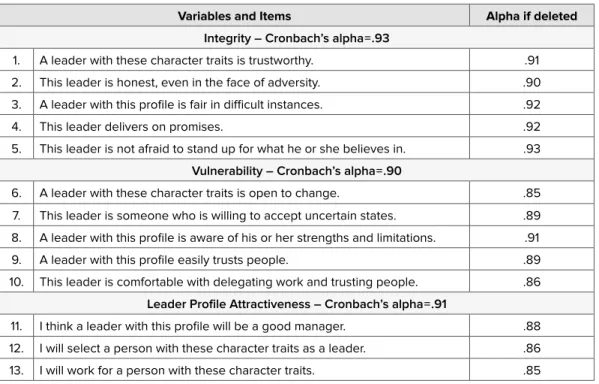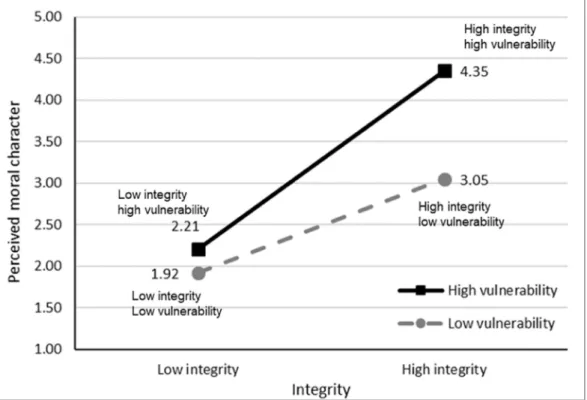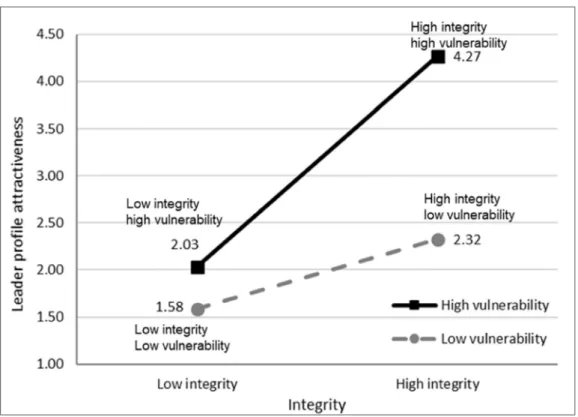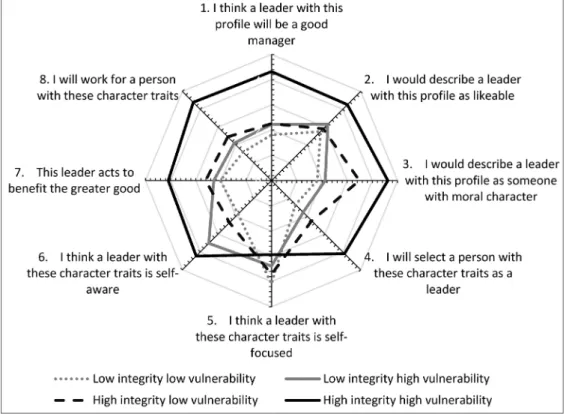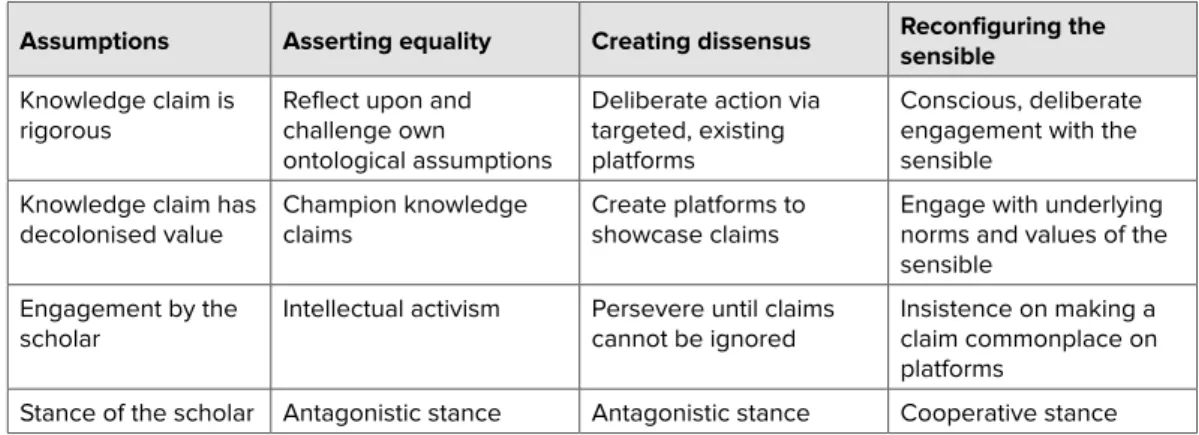Using a vignette experiment, they investigated the contribution of integrity and vulnerability to the perception of moral character and the attractiveness of a leader's behavioral profile. Leaders with moral character (having the knowledge, will, and courage to act consistently morally) (Lickona, 1991) are considered critical to the success of organizations (McKenna & Campbell, 2011). The aim of this article is to investigate the contribution of integrity and vulnerability to the perceived moral character and attractiveness of a leader's behavioral profile.
The constructs of integrity and vulnerability are examined, and propositions are developed about their relationship with perceived moral character and the attractiveness of a leader's behavioral profile. Integrity is often presented as an essential feature of moral character (Audi & Murphy, 2006; Sarros & Cooper, 2006). Attributions of moral character and integrity are therefore largely perception-based (McCann & Holt, 2013; Peng & Wei, 2018).
Research method
Manipulation checks
To evaluate the effectiveness of the manipulation of the independent variables, each of the leadership profiles was accompanied by the same questionnaire. Perceived integrity was measured by deriving five items from the studies by Moorman et al. These studies converged on the idea that leadership integrity will not compromise the values of honesty, respect, fairness, and trust, despite adversity, and thus a person with integrity will exhibit credibility.
Perceived vulnerability was measured by deriving five items based on the studies of Walumbwa et al.
Independent variable data collection instruments
Sampling and sample description
Results
The statistical significance of the variance in the means between high and low vulnerability and integrity, respectively, and separately, was assessed by Anova (Table 5). It can be concluded that the perceived attractiveness of the leader profiles with low vulnerability shows no significant statistical difference compared to the isolated profiles with high vulnerability. The significance of the combined effect of vulnerability and integrity on perceptions of moral character for the four leader profiles was assessed by two-way Anova of each of the means.
The significance of the combined effect of vulnerability and integrity on leader profile attractiveness for the four respective leader profiles was assessed via two-way Anova of each of the means. This provides support for Proposition 3: The combination of integrity and vulnerability adds to the attractiveness of the leadership profile. The means of the responses to these items in each of the four leader profiles are illustrated in Figure 3.

Discussion and conclusions
These results strengthen the argument that vulnerability unlocks the value of integrity and that integrity unlocks the value of vulnerability. Although great care was taken in writing the vignettes to reliably represent the respective constructs, vignettes tend to be too simple and subjective, and are therefore prone to misinterpretation by the respondents leading to invalid answers. Research that considers different additional traits and different combinations of such traits would add much value to our understanding of moral character and ethical leadership.
Combining vulnerability with the much better known construct of integrity as a complementary trait of moral character has the potential to not only unlock moral character but also increase the attractiveness of the leader's profile. Therefore, in the selection and development of leaders for the future, the importance of integrity and vulnerability must be considered in combination to improve organizations' chances of being led by individuals of moral character. Analysis of ethical leadership and integrity development in local government: USA, Netherlands, Montenegro and Serbia.
Risk and asymmetry in development ethics
- Introduction
- Taking risk attitudes seriously
- Autonomy and responsiveness
- Risk and choice displacement
- Towards a new framework
The Vulnerability veto applies where risky decisions cannot reliably be made in response to the risk attitudes of those affected; it requires risk aversion in assessing losses to the most vulnerable. The motivation for the Veto is that the asymmetries involved in the development context can make it difficult for decisions to respond properly to the risk attitudes of those affected. Instead, the importance of autonomy requires that decisions respond to the risk attitudes of those affected, as I argue in 'Autonomy and Responsiveness'.
Nevertheless, there are difficulties for a decision-maker wishing to respond to the risk attitudes of those affected: (a) first, there are multiple ways of interpreting preferences, and thus eliciting risk attitudes is unreliable; (b) second, risk attitudes vary by domain; and (c) third, some decisions are transformative and change the attitudes of those involved. While it is impracticable to enable participation, these asymmetries make it even more difficult for a decision maker to respond reliably to the risk attitudes of those involved. The expected utility of the alternative is the weighted average of the possible changes the alternative makes to the decision maker's utility, where the weights are the probability of those changes.
I now turn to the idea that autonomy is an important value in a development context, and that the value of autonomy recommends that risky decisions respond to the risk attitudes of those affected. Income distribution therefore measures the distribution of an important ability - the ability to buy what one wants and needs, whatever that may be. This in turn supports the idea that decisions about risk should respond to the risk attitudes of those affected.
This falls short of a comprehensive normative theory of risk, but supports the starting point: that a decision must respond appropriately to the risk attitudes of those on whom it imposes the risk. In the context of displacement of choice, we should not assume that the decision-maker has reliable access to the risk relations of the affected. The fact that the decision-maker exercises great relative control over a matter of great relative importance to the beneficiary gives the beneficiary reason to present his views on the risk as more aligned with those of the decision-maker than they might be.
Even if a negative shock does not occur, vulnerability is a threat to a person's autonomy, as it reduces the range of their capabilities – the valuable courses of action they can choose (Fuentes-Nieva, 2010). The question for the decision-maker is whether people are vulnerable to certain negative risks posed by the alternatives envisaged. Ideally, those affected by a risky decision, even if they are vulnerable, should be empowered to use their own risk thinking in the decision-making process.
Using the Critical Management Studies tenet of denaturalisation as a vehicle to
- The discourse surrounding decolonisation post-#FeesMustFall
- Decolonisation and the South African management discourse
- Critical management studies and decolonisation
- Unpacking ‘denaturalisation’
- From Rancière to decolonisation through denaturalisation
- Conclusion
Indeed, in the years following the #FeesMustFall protests, decolonization became part of the institutional agenda in many universities in South Africa. Decolonization thus requires reconceptualizing the purpose of the university in the African context. Management as an academic discipline can also be seen as a continuation of the colonial project (Jack . & Westwood, 2006).
This situation should be seen as part of the larger project of Western capitalism. The issue of professionalism is not new in management education discourse, dating back to the critique of the notion of professionalism in business schools in the late 1950s (Gordon & Howell, 1959; Pierson, 1959). Decolonization represents a revolt against the centrality of "the West" in the African understanding of the world and Africa's place in the world.
In Rancière's concept of emancipation, three ideas stand out, the achievement of equality, the creation of disagreements, and the transformation of the “distribution of the sensual” (Huault et al., 2014). The third point Rancière makes in emancipation is what he calls the “reconfiguration of the share of the reasonable” (Rancière, 2004; Rancière, 2009a). Rancière therefore argues that in order to achieve emancipation, a reconfiguration of this sensory system is necessary.
In other words, they must demonstrate that their reconfiguration of the sensuous is in the best interests of the sensuous; that it will work for the good of the reasonable. Scholars must believe in the legitimacy of the knowledge claims on which they seek to assert equality, for the legitimacy they seek will not come automatically, but will have to be fought for. However, this is defined within the parameters of the epistemic tradition from which it originates.
As indicated, creating disagreement requires deliberate action on the part of the creator of the knowledge claim. Again, this would require great personal effort and struggle on the part of the scholar. Based on these assumptions, Table 2 presents a quick reference to the most salient points outlined in the discussion above.
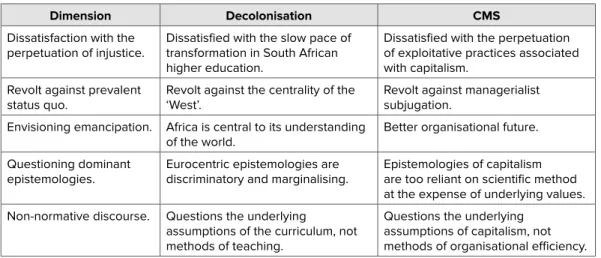
Untrepreneurship
- A short overview of development and development theory
- The entrepreneurship theory impasse
- Aim and objective
- Applying post-development critique to entrepreneurship theory
- EDA as an overtly capitalist mechanism
- Tainted with colonialism
- The (ignored) endogenous context
- Conclusion
Africa's colonial history has led to the view that "the continent is fundamentally inadequate, a place of systemic failure in terms of its ability to engage and participate in the modern world" (Andreasson. The theory behind -development and calls for the radical rejection of the entire development paradigm, the theory Since the publication of the Development Dictionary in 1992, more than one strand of post-development theory has emerged.
Post-development theory thus provides a tool for radically deconstructing mainstream development theory and exposing the assumptions inherent in development ideology (Harcourt. Normative capitalist ideology is built on the premise that the entrepreneurial enterprise is the only possible model for the generating wealth, income and employment in society (Da Costa & Silva Saraiva and therefore “the more entrepreneurs the better” (Verduijn & Essers, 2013:614). By subjecting the mainstream theory of entrepreneurship to post-development theory critique, it expands study the burgeoning field of critical entrepreneurship studies.
In mainstream development theory, it is assumed that societies can – and will – break free from the perceived misery in the 'underdeveloped' world by adopting the more desirable characteristics of 'the West'. The limitations of EDA as an overt capitalist mechanism must be recognized, drawing from post-development theory. Programs and projects are implemented to transform the 'underdeveloped' societies to look more like the universal standard - Western society.
He has found that the dominant discourse in entrepreneurship research reproduces the myth of the 'entrepreneur' as a white, dominant, rational, European/North American, male hero, and that very few studies have challenged these ideological stereotypes that underlie the mainstream - the entrepreneurship theory. The rejection of mainstream entrepreneurship ideology as a colonial construct, from a neo-populist post-development perspective, can be considered a spark. It is important to note the criticism of post-development theory in this regard.
Some post-development theorists attribute this to the second form of colonialism – the colonization of the mind (i.e. Nandy, 1997). Post-development has shown how "the politics of poverty reduction often comes at the price of increasing inequality and environmental degradation" (Sachs. The myth of 'the entrepreneur', created by mainstream entrepreneurship research, needs to be undone by presenting new scientific knowledge.
African Journal of BUSINESS ETHICS

